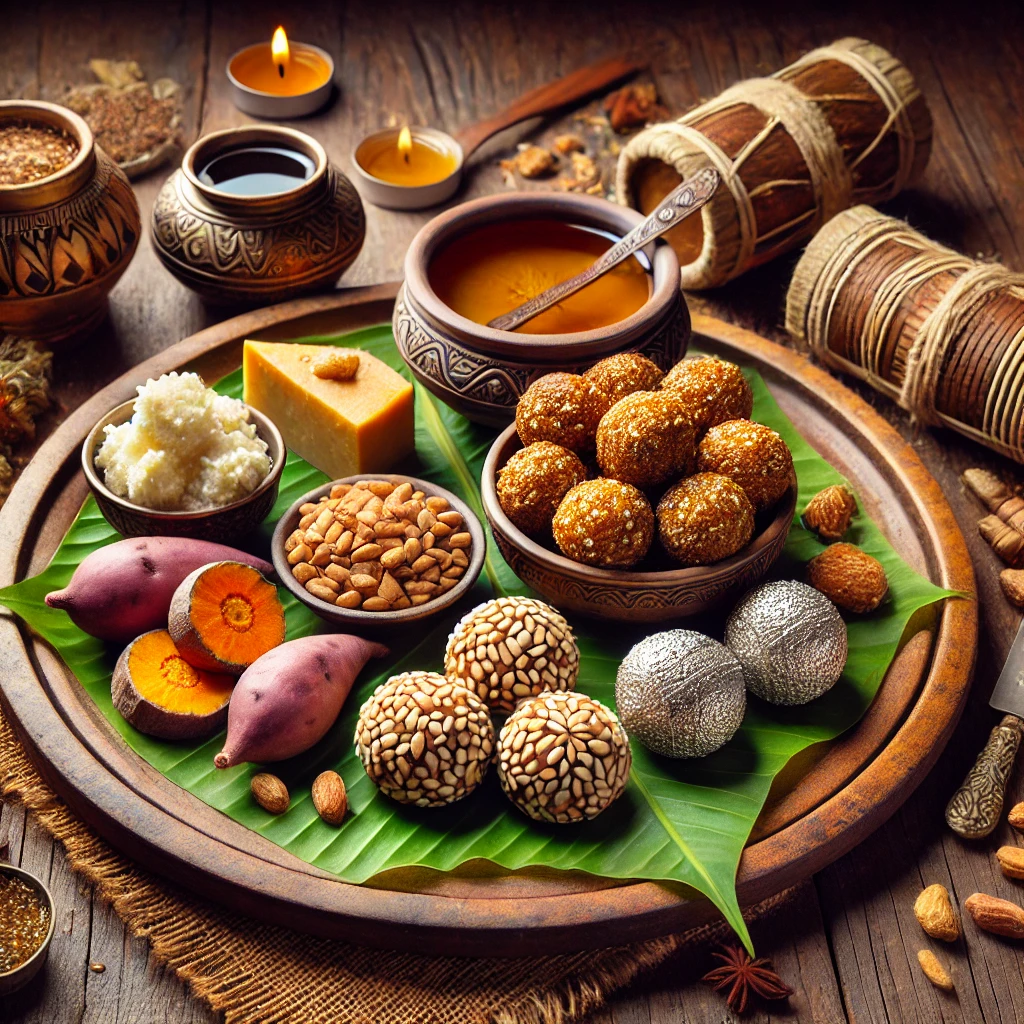Makar Sankranti, known as Maghe Sankranti in Nepal, is one of the most auspicious and widely celebrated festivals in the country. Observed annually on the first day of the Nepali month of Magh (mid-January), the festival marks the transition of the sun into the zodiac sign of Capricorn (Makara). This celestial event signifies the end of the winter solstice and the beginning of longer, warmer days.

Why Do We Celebrate Maghe Sankranti in Nepal?
The festival is deeply rooted in the agrarian lifestyle of Nepal and celebrates the harvest season. It is a time to honor the sun god, thank nature for its abundance, and usher in prosperity and good health. Maghe Sankranti is also associated with spiritual significance, as it is believed to bring blessings and cleanse past sins.
Who Celebrates Maghe Sankranti?
Maghe Sankranti is celebrated by people from various communities across Nepal, including the Tharu, Newar, Chhetri, Brahmin, and Magar communities. Each ethnic group has unique traditions and rituals, adding to the cultural richness of the festival.
Where Is Maghe Sankranti Celebrated in Nepal?
Maghe Sankranti is celebrated across Nepal, but some regions are particularly renowned for their unique festivities:
- Devghat (Chitwan and Tanahun): A popular pilgrimage site where devotees take holy dips in the confluence of rivers.
- Panauti (Kavrepalanchok): Known for its Makar Mela, held every 12 years, attracting thousands of pilgrims.
- Tarai Region: The Tharu community celebrates the festival as Maghi, marking their New Year with grand feasts and cultural dances.
What Do People Eat on Maghe Sankranti?
The festival is incomplete without a traditional Nepali feast. Special foods are prepared to celebrate the occasion, including:
- Til Ko Laddu (Sesame Seed Balls): Symbolizing warmth and prosperity, these are an essential delicacy.
- Chaku (Molasses): Known for its energy-boosting properties, chaku is paired with other festive foods.
- Yam and Sweet Potatoes: Root vegetables are boiled and served as a simple yet significant dish.
- Ghee (Clarified Butter): Consumed for its nutritional and warming qualities.
- Gundruk and Sinki (Fermented Vegetables): Popular side dishes during the feast.
What Do People Do During Maghe Sankranti?
- Holy Bathing: Many Nepalis start the day with a dip in sacred rivers, such as the Trishuli, Kali Gandaki, or Bagmati, to cleanse their body and soul.
- Worship and Rituals: Devotees visit temples and offer prayers to deities, especially Surya (the Sun God).
- Family Gatherings: It’s a time to reunite with loved ones, share meals, and celebrate togetherness.
- Cultural Activities: In the Tarai, traditional dances and festivities are organized by the Tharu community to mark the occasion.
Why Do We Eat Special Foods During Maghe Sankranti?
The festival foods are more than just delicious treats; they have symbolic and health-related significance:
- Sesame and Molasses: Provide warmth and energy during the cold winter months.
- Yam and Sweet Potatoes: Represent prosperity and are packed with nutrients.
- Ghee: Nourishes the body and helps combat winter dryness.
Bullfighting (Goru Jatra): A Unique Tradition
In certain areas of Nepal, particularly in the Tarai region and parts of the mid-hills, bullfighting is a traditional event organized during Maghe Sankranti. The event is not about violence but rather a cultural expression, where bulls are showcased for their strength and endurance.
Where Does Bullfighting Happen?
- Nuwakot: This district is especially famous for its Maghe Sankranti bullfighting events. Villagers gather in large numbers to witness the spectacle.
- Dhulikhel (Kavrepalanchok): Another region where bulls are brought to compete, symbolizing strength and fertility.
Conclusion
Maghe Sankranti is not only a time to indulge in traditional foods and rituals but also an occasion to witness and participate in unique cultural activities. Whether it’s the thrill of bullfighting in Nuwakot or the joy of playing traditional games like tug of war and swinging on linge ping, the festival offers a rich tapestry of Nepalese traditions.
These activities not only entertain but also strengthen communal ties and preserve the heritage of Nepal. If you plan to celebrate Maghe Sankranti in Nepal, make sure to explore these vibrant traditions and immerse yourself in the cultural festivities.
